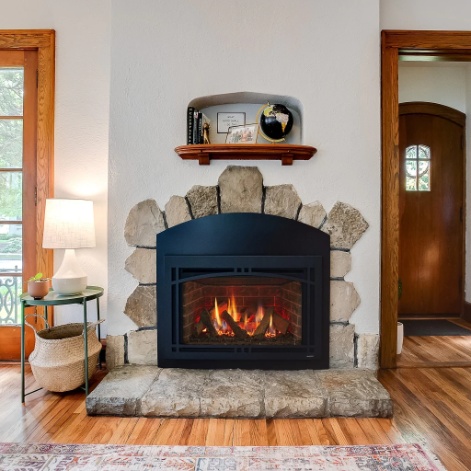Table of Contents
Using a gas fireplace can provide warmth and ambiance to your home, but what happens when the power goes out? Can a gas fireplace be used without electricity? The answer may surprise you. Understanding the workings of a gas fireplace and its components is crucial for determining whether it can still function in the absence of electricity.
In this article, we will explore the important considerations and factors to know about using a gas fireplace without electricity. We’ll discuss the benefits and drawbacks of using a gas fireplace without electricity, so you can make an informed decision based on your specific needs and circumstances.
By the end of this article, you will have a clear understanding of whether it is possible to use a gas fireplace without electricity and the important considerations to keep in mind.
Why is it Important to Know if a Gas Fireplace Can be Used Without Electricity?
Understanding the significance of knowing whether or not a gas fireplace can function without electricity is crucial for various reasons. During instances of power outages, having a gas fireplace that doesn’t rely on electricity becomes invaluable as it serves as a reliable source of warmth and heat. This becomes especially vital in cold weather conditions when electricity might be inaccessible for extended durations.
Being aware of whether a gas fireplace can operate without electricity gives homeowners the advantage of having a backup heating option in case of emergencies. Situations like natural disasters or power supply disruptions can leave individuals without heating for days or even weeks. However, having a gas fireplace that operates independently of electricity ensures that individuals can still maintain a warm and comfortable home environment.
Additionally, the knowledge of whether a gas fireplace requires electricity or not enables individuals to make well-informed decisions when selecting the ideal type of fireplace for their residence. This allows them to consider their specific needs, such as their geographical location, the frequency of power outages, and their reliance on electricity.
Ultimately, comprehending if a gas fireplace can be used without electricity is essential for preparedness, comfort, and peace of mind, particularly in situations where the power supply is uncertain or unavailable.
Understanding Gas Fireplaces
Gas fireplaces offer a convenient and efficient way to create warmth and ambiance in a home. Here’s a basic understanding of gas fireplaces:
- Gas as Fuel: Gas fireplaces use either natural gas or propane as fuel sources. These gases are easily accessible and provide a consistent and clean-burning flame.
- Ignition: Gas fireplaces typically have an electronic ignition system that requires electricity to ignite the gas. This ignition system may involve a pilot light or an electronic spark.
- Flame Control: Once the gas is ignited, you can control the flame height and intensity using a control knob or switch. This allows you to adjust the heat output and create the desired ambiance.
- Heat Distribution: Gas fireplaces use fans or natural convection to distribute heat throughout the room. Some models also have built-in blowers to enhance heat circulation.
- Ventilation: Gas fireplaces require proper ventilation to ensure the safe release of combustion byproducts, such as carbon monoxide. Venting options include direct vent, natural vent, or vent-free systems.
- Electricity Dependency: While gas fireplaces require electricity for ignition, many models can still operate without electricity once the pilot light is ignited. This means you can enjoy the warmth and aesthetic of a gas fireplace during power outages.
- Optional Features: Gas fireplaces often come with additional features, such as remote controls, thermostat settings, and decorative elements like logs or glass beads.
- Maintenance: Regular maintenance, including cleaning the glass, inspecting the gas lines, and keeping the venting system clear, is essential for the safe and efficient operation of a gas fireplace.
- Installation: It is crucial to have a professional install and inspect a gas fireplace to ensure compliance with local building codes and safety regulations.
- Benefits: Gas fireplaces offer several advantages, including energy efficiency, convenience, low emissions, and the ability to provide heat even during power outages.
How do Gas Fireplaces Work?
Gas fireplaces work by using natural gas or propane as fuel to produce heat and create a realistic flame. The basic components of a gas fireplace include a gas burner, a combustion chamber, and a set of artificial logs or other decorative elements.
To explain how gas fireplaces work, they start by igniting the gas burner using either a pilot light or an electronic ignition system. Once ignited, the gas fuel is released and ignited, resulting in flames that heat up the combustion chamber. It is worth mentioning that the combustion chamber is typically lined with refractory material, which helps in radiating and retaining heat.
The heat produced by the flames is then radiated into the room through either a heat exchanger or a set of ceramic logs. In some cases, gas fireplaces may also be equipped with blowers to distribute heat more evenly.
To have control over the flames and heat output, gas fireplaces often come with a control knob or a remote control that allows users to adjust the flame height and temperature. Consequently, the users can turn the flame on and off as needed, providing instant heat without relying on wood or pellets.
Gas fireplaces offer a convenient and efficient alternative to traditional wood-burning fireplaces. They provide warmth, ambiance, and convenience at the touch of a button.
What Components of a Gas Fireplace Require Electricity?
- Ignition system: The ignition system of a gas fireplace is powered by electricity. It is responsible for lighting the gas and starting the fire.
- Thermostat: Many gas fireplaces have a thermostat that controls the temperature of the room. The thermostat requires electricity to function.
- Blower: Some gas fireplaces have a blower that circulates warm air throughout the room. The blower is powered by electricity.
- Lights: Gas fireplaces often have integrated lights that create a realistic flame effect. These lights require electricity to illuminate.
When considering using a gas fireplace without electricity, it is important to keep in mind that if the power goes out, these components will not function. There are alternative options available:
- Manual ignition: Some gas fireplaces have a manual ignition option that allows them to be lit without electricity. This can be useful during power outages.
- No blower: If the fireplace has a blower, it will not operate without electricity. The heat generated by the flames can still warm the room.
- Secondary heating sources: It is always a good idea to have an alternative heating source, such as a generator or a portable space heater, in case of power outages.
Before attempting to use a gas fireplace without electricity, it is important to consult the manufacturer’s guidelines and local building codes to ensure safety. It is important to consider any potential drawbacks, such as limited heat distribution without a blower.
Using a Gas Fireplace Without Electricity
When it comes to using a gas fireplace without electricity, there’s more than meets the eye. In this section, we’ll uncover the secrets and possibilities. From exploring different venting options to discovering alternative ignition methods, we’ll delve into ways you can still enjoy the cozy warmth even when the power goes out. And if you’re wondering about manual control options, we’ve got you covered. Get ready to unlock the untapped potential of your gas fireplace without the need for electricity!
Venting
Proper venting is an essential aspect to consider when using a gas fireplace without electricity. It ensures the safe release of combustion byproducts, such as carbon monoxide, to the outside environment. There are two main types of venting systems for gas fireplaces: natural venting and direct venting.
Natural venting involves a chimney or flue system that relies on the natural buoyancy of hot air to carry the combustion byproducts out of the home. This system requires electricity for the operation of the exhaust fan.
On the other hand, direct venting utilizes a sealed combustion system that draws in fresh air for combustion and expels the combustion byproducts directly through a vent in the wall or roof. This system does not rely on electricity and can be a suitable option if you want to use a gas fireplace during power outages.
It is important to note that the use of ventless gas fireplaces, which do not require any venting, may not be allowed in all areas due to safety concerns. Always check local building codes and manufacturer guidelines to ensure compliance and safe operation.
Proper venting is crucial when considering using a gas fireplace without electricity. It ensures the safe release of combustion byproducts and can be achieved through either natural venting or direct venting systems. Always adhere to safety guidelines and regulations to protect yourself and your home.
True History
In the late 19th century, the invention of the gas fireplace revolutionized home heating and provided a convenient and efficient alternative to traditional wood-burning fireplaces. As technology advanced, venting systems were developed to improve safety and efficiency. Today, gas fireplaces continue to be a popular choice for homeowners, offering warmth and ambiance without the need for constant maintenance and wood fuel. The introduction of direct venting systems has further enhanced the usability of gas fireplaces, allowing them to be used even during power outages. With advancements in design and engineering, gas fireplaces have become a reliable and convenient heating option for many households around the world.
Ignition Methods
- Many gas fireplaces are equipped with a direct ignition system. This means that the fireplace has an electronic ignition device that creates a spark to ignite the gas when the fireplace is turned on.
- Some gas fireplaces have a pilot light, which is a small, continuously burning flame that serves as an ignition source. When the fireplace is turned on, the gas valve opens, and the pilot light ignites the gas.
- In some cases, gas fireplaces can be manually ignited using a match or a lighter. This method is less common and typically requires lighting a burner or a pilot light manually.
When considering the ignition method for a gas fireplace, it is important to refer to the manufacturer’s guidelines to ensure safe and proper operation. Some factors to consider include the availability of electricity, the presence of a pilot light, and the ease of use for each ignition method. It is also important to comply with local building codes and safety concerns when operating a gas fireplace without electricity.
Manual Control Options
| Manual Control Options |
| 1. Key Valve |
| 2. Push-Button Ignition |
| 3. Millivolt Valve |
| 4. Remote Control |
When it comes to manual control options for gas fireplaces, there are several choices to consider.
- Key Valve: This option allows you to manually control the flow of gas by turning a key. This is a simple and straightforward method of control.
- Push-Button Ignition: This type of control option includes a push-button that you can use to ignite the gas fireplace. It offers convenience and ease of use.
- Millivolt Valve: With a millivolt valve, you can control the fireplace using a wall switch or thermostat. This option provides more control over the temperature and flame intensity.
- Remote Control: Some gas fireplaces come with a remote control, which allows you to adjust the settings from a distance. This can be especially convenient if you want to make changes without getting up from your seat.
Choosing the right manual control option for your gas fireplace depends on your personal preference and convenience. Consider factors such as ease of use, desired level of control, and the overall functionality of the control option.
Make sure to consult the manufacturer guidelines and local building codes to ensure that the manual control option you choose is compatible and meets safety standards.
Remember, with the right manual control option, you can enjoy the warmth and ambiance of your gas fireplace even without electricity.
Factors to Consider
When it comes to using a gas fireplace without electricity, there are several key factors to consider. In this section, we’ll cover the safety concerns surrounding this practice, the manufacturer guidelines you should follow, and the local building codes that may dictate your options. So grab a seat and let’s dive into the details that will help you make an informed decision about using a gas fireplace during a power outage.
Safety Concerns
Gas fireplaces are a popular choice for heating and ambiance in many homes. However, when using a gas fireplace without electricity, there are several safety concerns that need to be taken into consideration.
One of the main safety concerns is the risk of carbon monoxide poisoning. Without proper ventilation, carbon monoxide can accumulate in the room, which can be extremely dangerous, and in some cases, even fatal. To ensure safety, it is crucial to properly vent your gas fireplace to the outside, following manufacturer guidelines and local building codes.
Another important safety concern is the ignition method of the gas fireplace. Some gas fireplaces rely on electricity for ignition, so it is essential to have a backup ignition method in case of a power outage. This can be achieved through a manual ignition system or a battery-operated ignition system.
If your gas fireplace has a pilot light, regular maintenance checks are necessary to ensure its proper functioning. A malfunctioning pilot light can pose a safety hazard and may lead to gas leaks or other issues.
Additionally, fire safety should always be a top priority. Remember to keep flammable materials away from the fireplace, use a safety screen or glass doors to prevent sparks and embers from escaping, and never leave the fireplace unattended while in use.
When considering the use of a gas fireplace without electricity, it is vital to address these safety concerns regarding carbon monoxide, ignition methods, pilot light maintenance, and fire safety. By following these precautions, you can enjoy the warmth and comfort of your gas fireplace without compromising on safety.
Manufacturer Guidelines
| Manufacturer Guidelines |
| 1. Safety Compliance |
| 2. Recommended Installation |
| 3. Maintenance Procedures |
| 4. Warranty Information |
Manufacturer guidelines play a crucial role in using a gas fireplace without electricity. These guidelines provide important information on safety compliance, recommended installation, maintenance procedures, and warranty information.
1. Safety Compliance: Manufacturer guidelines outline the necessary safety measures that need to be followed while using a gas fireplace without electricity. These guidelines ensure that the fireplace operates safely and reduces the risk of accidents or hazards.
2. Recommended Installation: The manufacturer guidelines specify the proper installation procedures for using a gas fireplace without electricity. This includes guidelines for venting systems, ignition methods, and manual control options. Following these guidelines is essential to ensure the fireplace functions effectively and efficiently.
3. Maintenance Procedures: The manufacturer guidelines provide instructions on routine maintenance and cleaning of the gas fireplace. These guidelines outline the frequency of inspections, filter replacements, and other maintenance tasks to keep the fireplace in optimal condition.
4. Warranty Information: The manufacturer guidelines also include warranty information, specifying the terms and conditions of the warranty coverage. Following the recommended manufacturer guidelines is often a requirement for maintaining the validity of the warranty.
It is essential to carefully read and adhere to the manufacturer guidelines when using a gas fireplace without electricity. These guidelines ensure the safe and proper functioning of the fireplace, prolong its lifespan, and protect your investment.
Local Building Codes
Local building codes play a critical role in considering the use of a gas fireplace without electricity. These codes, which are established by local authorities, are essential for ensuring the safety and compliance of structures within their jurisdiction. In the case of gas fireplaces, these codes may stipulate specific requirements for proper ventilation, adequate clearances, and appropriate installation procedures.
Ventilation is one aspect that local building codes may address regarding gas fireplaces. These regulations are in place to ensure that combustion byproducts, such as carbon monoxide, are effectively exhausted, maintaining indoor air quality and preventing potential health hazards.
Clearances are another important consideration outlined in building codes. These regulations specify the minimum distances that must be maintained between a gas fireplace and combustible materials like walls, furniture, and curtains. Adhering to these clearances mitigates the risk of fire and ensures the safe operation of the fireplace.
Installation procedures also fall under the jurisdiction of local building codes. These guidelines are provided to ensure that gas fireplaces are installed properly, including the appropriate connections for gas and electricity. This helps prevent leaks and other safety hazards.
It is crucial to consult the local building codes in your area before using a gas fireplace without electricity. Non-compliance with these codes not only poses safety risks but may also result in fines or penalties.
Pro-tip: Always seek guidance from certified professionals, such as licensed contractors or fireplace specialists, to ensure that your gas fireplace installation or modifications align with local building codes and regulations.
Benefits and Drawbacks
Using a gas fireplace without electricity can have both benefits and drawbacks. Let’s explore them:
Benefits:
- Operational Independence: One of the main benefits of a gas fireplace that can operate without electricity is that it provides heat even during power outages. This is particularly useful in regions prone to frequent power disruptions or during emergencies when electricity is unavailable.
- Reliable Heat Source: A gas fireplace that doesn’t rely on electricity can provide a reliable and consistent source of heat. This is especially important during cold weather when conventional heating systems may be affected by power outages.
- No Blower Noise: Gas fireplaces without electricity do not require blowers or fans to distribute heat. As a result, they operate silently, providing a cozy and quiet ambiance in the room.
- Energy Efficiency: Some gas fireplaces without electricity can operate on natural gas or propane. These fuel sources are generally energy-efficient, making them a cost-effective heating option.
Drawbacks:
- Limited Features: Gas fireplaces that don’t require electricity may lack certain features commonly found in electric or hybrid models. These features could include remote controls, programmable timers, or flame intensity adjustment.
- Less Decorative Options: Gas fireplaces without electricity may have fewer design options compared to electric fireplaces. This limitation might restrict the range of decorative styles that can be achieved.
- Dependency on Gas Supply: To operate a gas fireplace without electricity, a continuous supply of natural gas or propane is necessary. This means being mindful of fuel levels and ensuring a constant supply, which may require storage or regular refills.
Considering the benefits and drawbacks, the decision to use a gas fireplace without electricity depends on personal needs, the availability of gas fuel, and the desired features and aesthetics.
Benefits of Using a Gas Fireplace Without Electricity
The benefits of using a gas fireplace without electricity are:
- Reliability: Utilizing a gas fireplace that functions without electricity offers a dependable source of heat in case of power outages or in areas with unreliable electricity.
- Independence: By not depending on electricity, you have the freedom to use your gas fireplace whenever you desire, regardless of power availability.
- Energy Efficiency: Gas fireplaces generally have higher energy efficiency compared to traditional wood-burning fireplaces, providing heat without the requirement for electricity.
- Cost Savings: Operating a gas fireplace without electricity can lead to savings on your energy bills compared to electric fireplace alternatives.
- Environmental Friendliness: Gas fireplaces produce fewer emissions compared to wood-burning fireplaces, making them a more eco-friendly heating option.
It is important to note that the benefits of using a gas fireplace without electricity may vary depending on the specific model and manufacturer guidelines. It is essential to consider safety concerns, adhere to local building codes, and follow proper maintenance and usage instructions to maximize the advantages of operating a gas fireplace without electricity.
Drawbacks of Using a Gas Fireplace Without Electricity
- Drawbacks of Using a Gas Fireplace Without Electricity: One of the main disadvantages of utilizing a gas fireplace without electricity is that various components of the fireplace rely on electricity for proper functioning. This includes the blower, which aids in distributing heat throughout the room, as well as the ignition system, which is responsible for igniting the gas. Without electricity, these components will not operate, resulting in a lack of heat and functionality.
- Lack of Heat Distribution: Another drawback is the inadequate distribution of heat. Without electricity, the blower cannot function, making it challenging for the heat to evenly disperse across the room. This can lead to uneven heating and a less comfortable environment.
- Limited Control Options: Gas fireplaces without electricity often lack remote control or programmable settings. This signifies that you will need to manually regulate the flame height and heat output, which can be inconvenient and less user-friendly.
- Reduced Safety Features: Gas fireplaces with electricity typically incorporate safety features such as flame sensors and automatic shut-off mechanisms. Without electricity, these safety features may be compromised, raising the risk of accidents or malfunctions.
Considering these drawbacks, it is crucial to evaluate your needs and preferences before opting for a gas fireplace without electricity. If heat distribution, control options, and safety features are significant to you, it may be worthwhile to invest in a gas fireplace that necessitates electricity. However, if you are willing to compromise on these aspects and prioritize the simplicity and rustic charm of an electricity-free fireplace, then utilizing a gas fireplace without electricity might be a suitable option for you.
Summary of Can a Gas Fireplace be Used Without Electricity?
Gas fireplaces can indeed be used without electricity. Alternative ignition methods and manual control options make it possible to operate them even when the power is out. However, it is essential to ensure proper ventilation by venting the combustion byproducts. Before using a gas fireplace without electricity, it is crucial to consider safety concerns, adhere to manufacturer guidelines, and comply with local building codes.
To summarize, it is possible to use a gas fireplace without electricity by making certain adjustments. One can employ alternative methods like using a match or battery-powered igniter to light the fireplace. Additionally, manual control options such as a manual valve or remote control with battery power can be utilized to regulate the flame. It is of utmost importance to prioritize safety and carefully follow manufacturer guidelines to ensure the proper functioning of the fireplace.
Before proceeding with using a gas fireplace without electricity, it is crucial to assess the specific requirements and limitations of the fireplace. If needed, consulting with a professional is highly recommended. It is also important to note that local building codes may determine whether using a gas fireplace without electricity is permitted or not.
While it is indeed possible to use a gas fireplace without electricity, one should consider safety precautions, manufacturer guidelines, and local regulations to ensure safe and functional operation.
True History
Here’s a true story: I once experienced a power outage during a winter storm, leaving my home without electricity for several days. Luckily, I had a gas fireplace that could be used without electricity. It provided both heat and comfort during those cold nights, allowing me to stay warm and cozy until the power was restored. This experience reinforced the significance of having alternative heating methods in unexpected situations.
FACT: According to the National Fire Protection Association (NFPA), gas fireplaces should be installed and used in accordance with the manufacturer’s instructions, and any modifications or repairs should be performed by qualified professionals. Therefore, it is crucial to keep all these important considerations in mind before using a gas fireplace without electricity.
Frequently Asked Questions
1. Can you use a gas fireplace without electricity?
Yes, you can use a gas fireplace without electricity if it has a standing or vertical pilot light or a backup battery.
2. How do you light a gas fireplace without electricity?
If your gas fireplace has a standing or vertical pilot light, you can light it with a simple lighter or match during a blackout.
3. What kind of gas fireplace can run without power?
Gas fireplaces with standing pilot lights or vertical pilot lights can run without power. Some gas fireplaces also have a backup battery option.
4. What should I do if my gas fireplace doesn’t have a standing pilot light or backup battery?
If your gas fireplace doesn’t have a standing pilot light or backup battery, it will not work during a power outage. You may need alternative heating sources during that time.
5. Can I turn on the blower of my gas fireplace without electricity?
No, you cannot turn on the blower of a gas fireplace without electricity. The blower requires power to operate, so it will not work during a power outage.
6. How long does a gas fireplace battery backup last?
The battery backup in a gas fireplace can last for several hours to a few days. The amount of time depends on the model and condition of the battery. If your battery backup is over 8 years old, it may not last as long as when it was new.
Latest Articles

What Is An NG (Natural Gas) Indicator And Why You Need It For Your Fireplace
Table of Contents1 Understanding Natural Gas Fireplaces2 What is an NG Indicator?3 Importance of NG Indicators for Safety4 Types of NG Indicators5 Installation and Maintenance of NG Indicators6 Signs of a Faulty NG Indicator7 Frequently Asked Questions Natural gas fireplaces are a favored option among numerous homeowners due to their convenience and effectiveness. But, what is an NG (Natural Gas) indicator and why you need it for your fireplace? It is imperative to comprehend how they function and the significance of having an NG (Natural Gas) indicator for safety purposes. This article delves into the definition and significance of NG indicators. We will discuss the potential hazards associated with the absence of one and the various types of indicators accessible. Also, we will discuss installation and maintenance recommendations, and methods to recognize and rectify issues with malfunctioning indicators. Stay well-informed and ensure the safety of your home by referring to this exhaustive guide. Understanding Natural Gas Fireplaces Natural gas fireplaces serve as an efficient and convenient heating option for numerous households. They utilize natural gas as a fuel source to deliver consistent warmth and ambiance. How They Work and Why They Need NG Indicators The operation of natural gas fireplaces involves igniting natural gas to generate heat. This process requires diligent monitoring to ensure both safety and efficiency, a task facilitated by the use of NG indicators. NG indicators play a critical role in detecting potential gas leaks. They enable residents to promptly address and mitigate any associated hazards. Through continuous monitoring of gas levels and providing timely warnings and alerts, NG indicators uphold a secure indoor environment. It is imperative to ensure that these indicators function properly to facilitate the effective operation of natural gas fireplaces. This helps mitigate the inherent risks linked to gas leaks. What is an NG Indicator? An NG indicator is a specialized device equipped with advanced sensors and technology. It is specifically designed to detect natural gas leaks and monitor gas pressure in appliances, such as fireplaces. Definition and Purpose The NG indicator functions as a detector that monitors gas appliances for potential leaks. It provides essential functionality to ensure safety in households utilizing natural gas. These detectors play a crucial role in protecting residences by notifying occupants of dangerous gas leaks long before they escalate into perilous situations. Through continuous monitoring of gas levels in the vicinity, NG indicators offer an additional layer of protection. This is particularly important in properties that rely on gas-operated fireplaces or stoves. These devices not only help avert potential disasters but also enhance the overall peace of mind of homeowners. They assure them that their living spaces are equipped with reliable safety features. Importance of NG Indicators for Safety Natural gas indicators are essential for maintaining safety in households equipped with natural gas appliances. These devices serve as a proactive measure to promptly detect gas leaks. This offers homeowners a sense of security and assurance. Potential Dangers of Not Having an NG Indicator The absence of an NG indicator in residences equipped with natural gas appliances can pose significant hazards. This includes the risk of undetected gas leaks , carbon monoxide poisoning , and pilot outages that may lead to dangerous situations. These potential risks can profoundly impact indoor air quality. They directly influence the health and safety of individuals residing in the household. Undetected gas leaks can go unnoticed, gradually permeating the air and creating a potentially explosive environment. Insufficient ventilation from undetected exposure to carbon monoxide can lead to serious health complications. These range from mild symptoms such as dizziness to fatal poisoning. Without proper monitoring from an NG indicator, families are left susceptible to these concealed threats. This underscores the critical importance of implementing proactive measures to mitigate such risks. Types of NG Indicators Indicators for Natural Gas (NG) are available in diverse types. Each presents distinct detection capabilities tailored to specific requirements, encompassing both manual and automated alternatives. Manual vs. Automatic Indicators Manual NG indicators require user intervention for monitoring gas levels and identifying leaks. On the other hand, automatic indicators employ sophisticated technology to deliver continuous, real-time monitoring. This heightened efficiency and oversight enhance safety protocols. Conventional manual indicators rely on individuals to physically inspect and evaluate gas levels periodically. This renders them more susceptible to human errors. Conversely, automatic indicators feature sensors capable of promptly detecting even the most minute fluctuations in gas levels. This establishes a more dependable and precise monitoring mechanism. Automatic indicators can activate alerts and shut-off systems upon detecting a leak. This ensures immediate action to avert potential hazards. This advanced technology enhances safety protocols and instills a sense of command and assurance among users. Installation and Maintenance of NG Indicators The reliable and accurate performance of NG indicators necessitates proper installation and consistent maintenance. This often entails professional installation and adherence to recommended service guidelines. Proper Installation and Regular Maintenance Tips The proper installation of NG indicators involves adhering to the specifications in the user manual. Maintenance protocols entail strict adherence to a predetermined maintenance schedule to ensure sustained operational efficiency. During the installation phase, it is imperative to verify that the NG indicators are securely affixed in the designated location as stipulated by the manufacturer. Crucial steps include confirming power source compatibility and ensuring proper grounding of the device to optimize performance. Calibration of the indicator must be executed meticulously to ensure precise readings. Regarding maintenance, essential practices include regular inspection for signs of wear, thorough cleaning of the indicator components, and routine functionality tests. By allocating time to a consistent maintenance regimen, the NG indicator can operate with optimal efficiency over an extended duration. Signs of a Faulty NG Indicator Recognizing indicators of a malfunctioning NG indicator is essential for upholding safety and performance standards. Inaccuracies and detection issues can undermine the efficacy of these devices. Identifying and Addressing Issues The process of identifying and addressing issues related to NG (natural gas) indicators requires a systematic troubleshooting approach. This ensures their optimal performance

What You Need To Know About Gas Log Set Safety And Installation Considerations
Table of Contents1 Understanding Gas Log Sets2 Safety Considerations for Gas Log Sets3 Installation Guidelines for Gas Log Sets4 Maintaining and Troubleshooting Gas Log Sets5 Frequently Asked Questions Gas log sets are a favored option among homeowners seeking to enjoy the comfort and atmosphere of a conventional fireplace without the inconvenience of wood. This article tells you what you need to know about gas log set safety and installation considerations. Before incorporating one into your residence, it is imperative to understand the safety considerations associated with their use. This discussion delves into the potential hazards linked with gas log sets. It presents crucial precautions to uphold the safety of your home. Also, it outlines proper installation procedures and offers insight into common errors to avoid. Finally, it provides advice on maintenance and troubleshooting. Gain comprehensive knowledge on gas log set safety and installation considerations. Understanding Gas Log Sets Comprehending gas log sets is essential for individuals seeking to elevate their fireplace experience, and for gas lag set safety and installation. These heating appliances can operate on either natural gas or propane. In addition, they are available in a range of styles, including vented, ventless, and vent-free options. They provide an array of benefits and customization opportunities through various fireplace accessories. What are Gas Log Sets? Gas log sets are meticulously crafted artificial logs. They are designed to imitate the appearance and functionality of authentic wood logs within fireplaces. These gas log sets typically consist of ceramic or refractory concrete logs that have been skillfully molded and painted. This allows them to replicate the natural grain and texture of real wood. The logs are arranged in various configurations within the fireplace. They establish a realistic and welcoming ambiance. In addition to the logs, gas log sets often include fireplace accessories such as glowing embers. Accessories also include decorative stones, and even pine cones to enhance the overall aesthetic appeal. Homeowners can select from an array of placement options. These include traditional wood stack, cascading driftwood, or a contemporary geometric arrangement. Homeowners can align their preferred style and design preferences. Safety Considerations for Gas Log Sets Safety considerations for gas log sets are of utmost importance to guarantee a secure and pleasant fireplace experience. It is essential to address potential hazards such as carbon monoxide exposure, gas leaks, and fire safety to maintain a safe environment for homeowners. Potential Hazards and Precautions Gas log sets come with potential hazards that must be taken seriously, including the risks of gas leaks, carbon monoxide poisoning, and fire incidents. It is imperative to establish and adhere to rigorous safety measures to ensure the well-being of individuals and properties involved in the use of gas log sets. Gas leaks represent a significant hazard when utilizing gas log sets. They can result in the accumulation of combustible gas within the premises, heightening the possibility of explosions or fires. Carbon monoxide, an insidious gas generated during incomplete combustion, poses a grave threat due to its colorless and odorless nature, making it undetectable without proper monitoring. To address these risks effectively, it is vital to install carbon monoxide detectors and gas leak sensors in the vicinity of the gas logs. Routine maintenance checks on the gas log system, including cleaning and inspection procedures, are critical to ensure safe operations and the prompt identification of potential issues. In case of a gas leak or suspected presence of carbon monoxide, immediate evacuation of the affected area is paramount, followed by prompt contact with emergency services. Recognizing the distinct odor of rotten eggs associated with natural gas can serve as an early warning sign, prompting swift actions to avert any potential accidents. Installation Guidelines for Gas Log Sets The installation of a gas log set necessitates meticulous planning and strict adherence to specific guidelines. This includes verifying a secure gas connection, ensuring proper gas lines are in place, and complying with local building codes. Often, the complexity of these requirements may require the expertise of a certified technician. Proper Installation Techniques The appropriate installation procedures for gas log sets involve the secure connection of gas lines, meticulous adherence to installation manuals, and strict compliance with local building codes. It is imperative to prioritize the guarantee of secure gas connections to avert leaks and potential safety hazards. During the installation of gas log sets, utilizing suitable sealants and fittings is essential to establish a tightly sealed connection. The correct installation of gas lines is critical for both the safety and operational efficacy of the gas log set. Reference to the installation manual is highly advisable for detailed, step-by-step guidance to prevent inaccuracies and ensure the successful establishment of the gas log set. Consistently adhering to building codes and regulations upholds safety standards. Seeking guidance and confirmation from a certified technician before and after installation can offer invaluable support and assurance throughout the process. Common Installation Mistakes to Avoid It is imperative to avoid common installation errors to ensure the secure and effective operation of gas log sets. This includes verifying proper gas connections and compliance with building codes. Improper gas connections can result in leaks and potential hazards, underscoring the importance of verifying the tightness and correct alignment of all fittings. Failure to adhere to building codes can lead to structural complications, penalties for non-compliance, or even safety concerns. To prevent these oversights, it is advised to consult the manufacturer’s installation guidelines and strictly adhere to local regulations. Engaging a certified technician for the installation of gas log sets guarantees that the procedure is carried out accurately and securely. This provides assurance that the system is functioning as intended. Maintaining and Troubleshooting Gas Log Sets Regular maintenance and troubleshooting of gas log sets are imperative to uphold their optimal performance and safety. This includes thorough examination of the pilot light, pilot assembly, and other gas appliances to preserve heating efficiency and promptly resolve any arising issues. Tips for Maintenance and Repair Ensuring the proper maintenance of your gas log set necessitates conducting

Key Considerations For Using Compressed Liquid Propane In Fireplace Installation
Table of Contents1 What is Compressed Liquid Propane?2 Benefits of Using Compressed Liquid Propane in Fireplaces3 Safety Precautions for Installing Compressed Liquid Propane Fireplaces4 Installation Process for Compressed Liquid Propane Fireplaces5 Maintenance and Care for Compressed Liquid Propane Fireplaces6 Alternative Fuel Options for Fireplaces7 Frequently Asked Questions If you are contemplating the use of compressed liquid propane in your fireplace installation, this discussion will delve into the advantages of adopting this alternative fuel option. These benefits include enhanced efficiency, cost savings, and important safety precautions to consider. Furthermore, a detailed step-by-step guide on the installation process will be provided, along with recommendations for maintenance and care. A comparison of various fuel options for fireplaces will also be conducted to assist you in making an informed decision. We encourage you to stay engaged to gain insights into optimizing your fireplace’s capabilities with compressed liquid propane. What is Compressed Liquid Propane? Compressed Liquid Propane is a versatile energy source contained in a high-pressure propane tank. It finds extensive utility in both residential and commercial settings, prominently including fireplaces. Recognized for its convenience and efficiency, Compressed Liquid Propane emerges as a favored option for heating residential spaces and facilitating culinary pursuits across various environments. Additionally, it serves as a viable fuel substitute in vehicular contexts, portable cooktops, and outdoor grilling scenarios due to its propensity for clean combustion. The attribute of portability, coupled with ease of storage, positions Compressed Liquid Propane as an optimal energy source for individuals residing off the conventional grid. It is also great for engaging in outdoor activities such as camping and recreational vehicle (RV) travel. Moreover, the high energy density inherent to Compressed Liquid Propane renders it a dependable choice for sustaining generators during instances of power disruptions. Benefits of Using Compressed Liquid Propane in Fireplaces Utilizing Compressed Liquid Propane for fireplace installation presents several benefits. These include enhanced fuel efficiency, convenience, cost-effectiveness, and a favorable environmental footprint. These attributes render it a recommended option for heating solutions, applicable to both on-grid and off-grid settings. Efficiency and Cost Savings The utilization of Compressed Liquid Propane in fireplaces offers significant advantages, notably in terms of high fuel efficiency and cost-effectiveness. These attributes are underscored by the exceptional BTU rating and overall heating efficiency of Compressed Liquid Propane. The elevated fuel efficiency exhibited by Compressed Liquid Propane fireplaces necessitates less fuel to generate the same level of heat compared to traditional wood-burning fireplaces or electric heating systems. Consequently, homeowners can realize cost savings on their heating expenditures over an extended period. Moreover, the clean-burning characteristics of propane minimize maintenance costs linked to soot and ash cleanup. This further enhances the cost-effectiveness of employing propane fireplaces. Safety Precautions for Installing Compressed Liquid Propane Fireplaces Ensuring safety is of utmost importance during the installation of Compressed Liquid Propane fireplaces. This requires strict adherence to safety regulations, meticulous attention to proper ventilation requirements, careful control of ignition sources, and the incorporation of carbon monoxide and gas leak detection systems. Important Safety Measures Essential safety protocols for the installation of Compressed Liquid Propane fireplaces encompass adherence to fire safety regulations. Engaging in professional assessments and employing sophisticated gas leak and carbon monoxide detection mechanisms is crucial. Professional evaluations play a critical role in identifying any prospective hazards or irregularities within the fireplace infrastructure. These assessments are vital in ensuring the operational integrity of all components and compliance with safety protocols. Routine inspections serve to forestall potential fire incidents, gas discharges, or carbon monoxide emissions that could pose significant threats to both the property and individuals in the vicinity. The utilization of advanced gas leak and carbon monoxide detection systems serves as an additional safeguard by promptly notifying occupants of any elevated levels of these hazardous gases. Installation Process for Compressed Liquid Propane Fireplaces The installation procedure for Compressed Liquid Propane fireplaces encompasses several critical steps. These include: Adhering to installation guidelines Correctly positioning the propane tank Ensuring precise gas line installation Optimizing heat output Monitoring pressure regulation Establishing the pilot light Step-by-Step Guide The installation process of Compressed Liquid Propane fireplaces involves a systematic approach. This begins with the construction of the firebox, followed by the installation of the gas control valve, setup of the ignition system, design of the flue, and verification of a suitable combustion air supply. The construction of the firebox assumes critical importance as it serves as the foundation of the fireplace structure. It securely holds the combustible materials in place. Subsequently, the gas control valve plays a key role in managing the propane flow, guaranteeing safe and efficient operation. The installation of the ignition system facilitates convenient and reliable fire initiation. Designing the flue is a necessary step to direct exhaust gases outside, thus preventing their accumulation indoors. Moreover, ensuring a proper combustion air supply is essential to sustain optimal burning conditions and enhance fuel consumption efficiency. Each component contributes significantly to the functionality and safety of the fireplace installation process. This underscores the importance of meticulous attention to detail and adherence to established protocols. Maintenance and Care for Compressed Liquid Propane Fireplaces Consistent maintenance and attention to Compressed Liquid Propane fireplaces are imperative to guarantee their optimal functionality. This includes adherence to prescribed maintenance protocols, regular chimney upkeep, prevention of soot accumulation, and scheduling of routine propane deliveries and professional inspections. Tips for Keeping Your Fireplace in Good Condition For the maintenance of your Compressed Liquid Propane fireplace, it is essential to conduct regular checks on ignition sources. Monitor flame appearance, clean the gas burner and pilot assembly, and verify the correct operation of the safety shut-off valve. The inspection of ignition sources requires a detailed examination of the electronic igniter. This helps identify any signs of damage or corrosion and ensures proper sparking upon activation. Monitoring flame appearance involves observing a consistent blue flame with minimal flickering, which signifies efficient combustion. Cleaning the gas burner and pilot assembly can be performed using a soft brush or compressed air to eliminate any dirt or debris that may


















































































